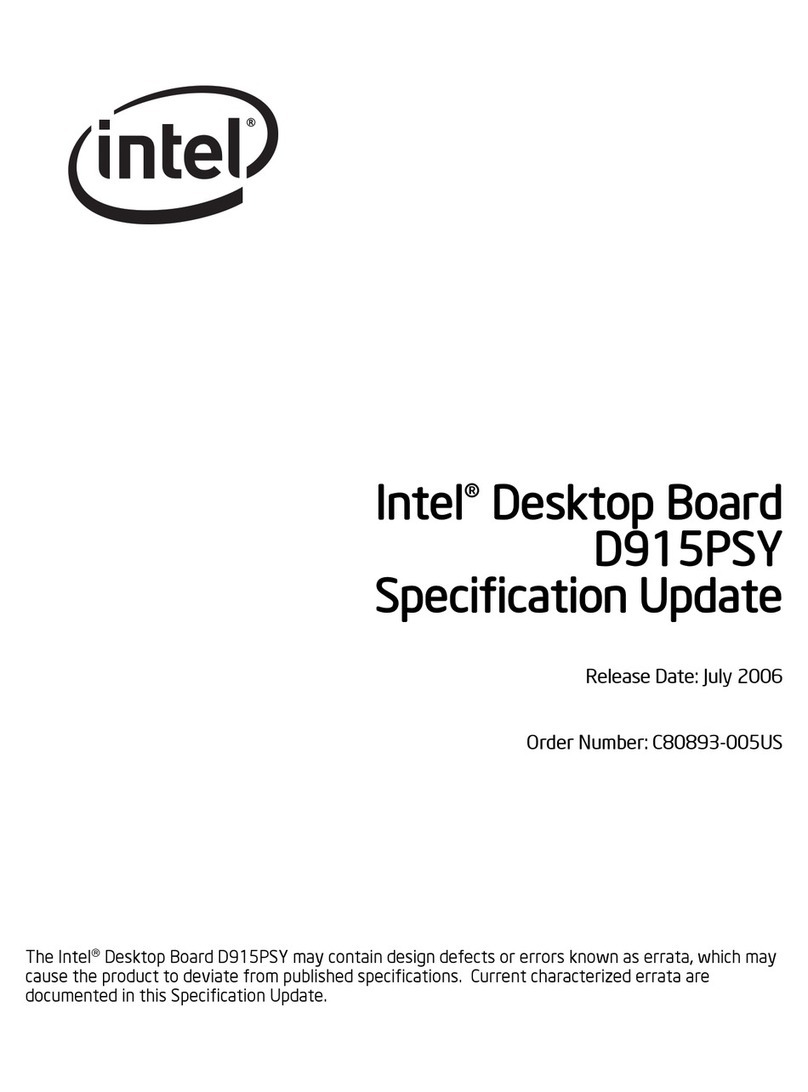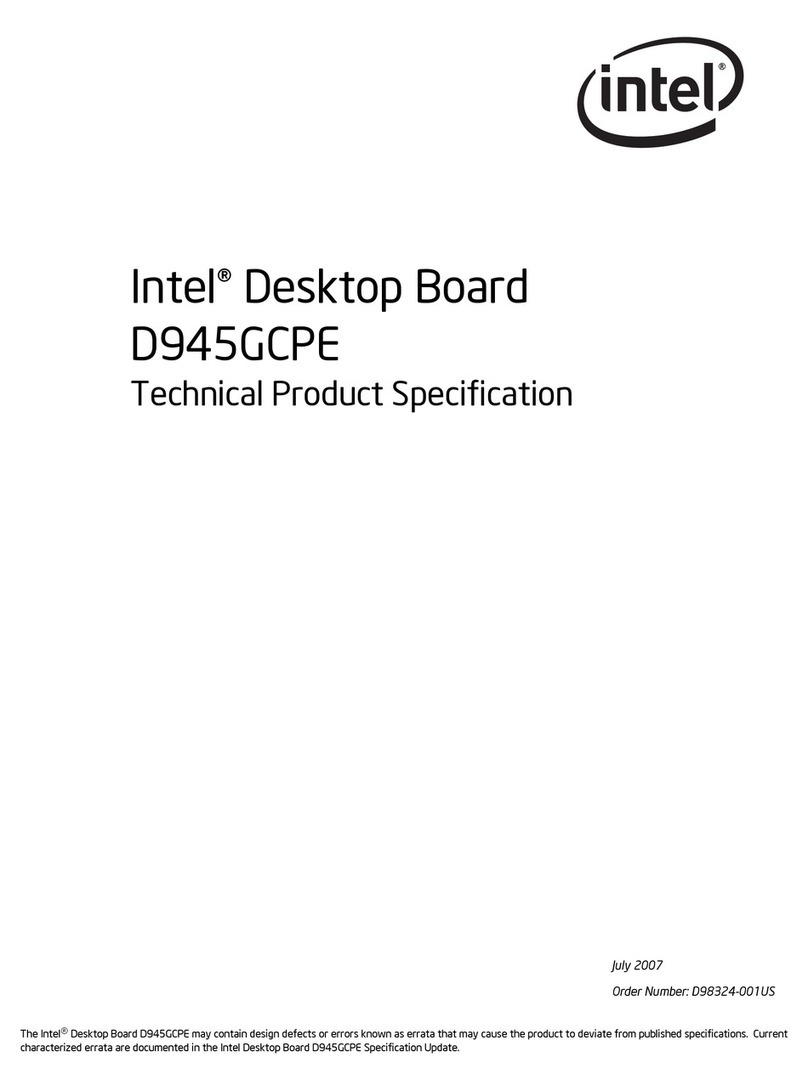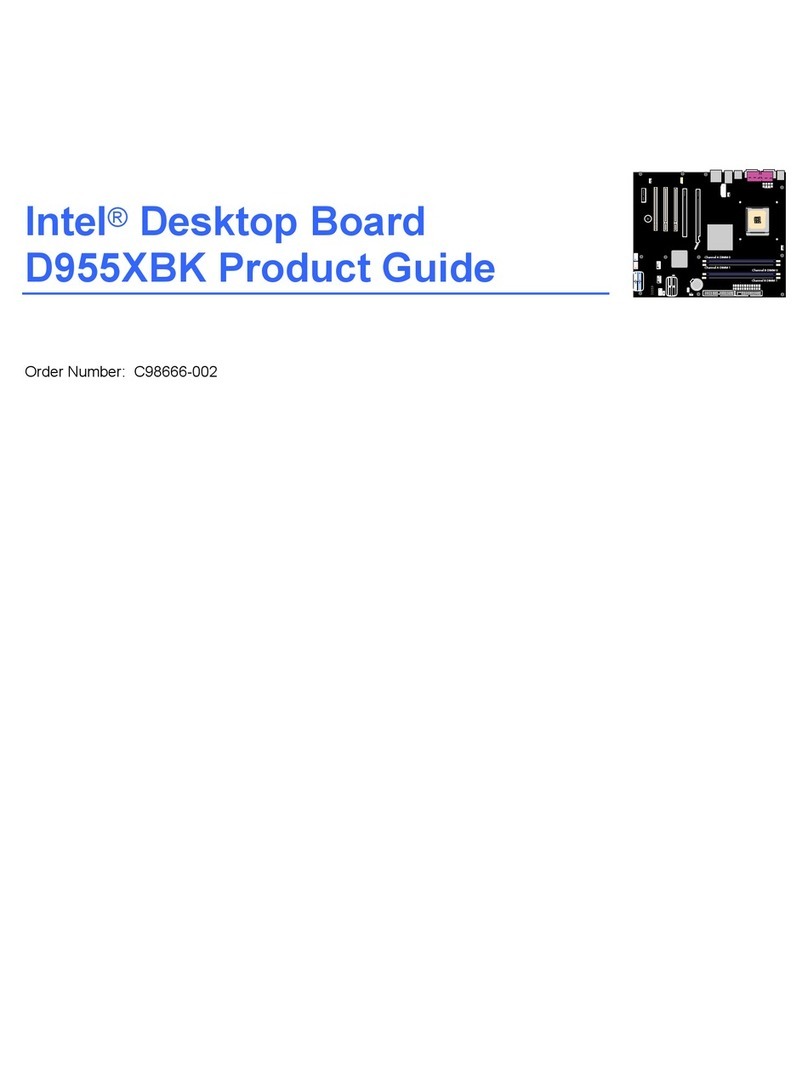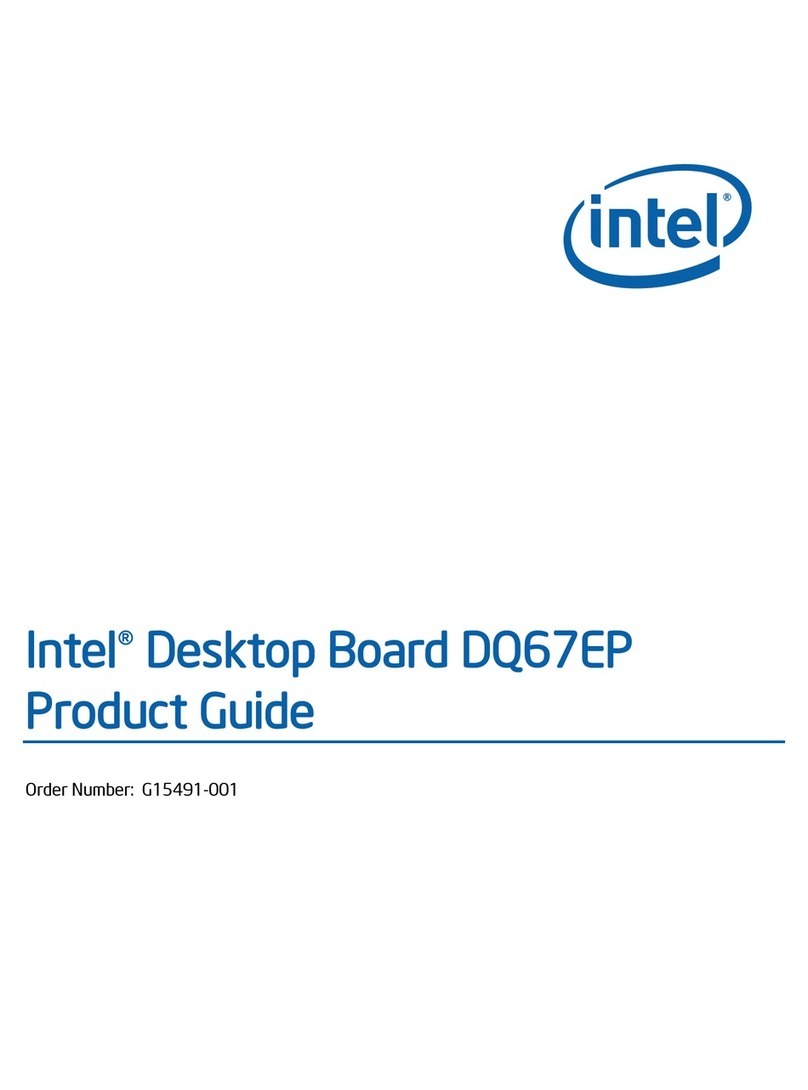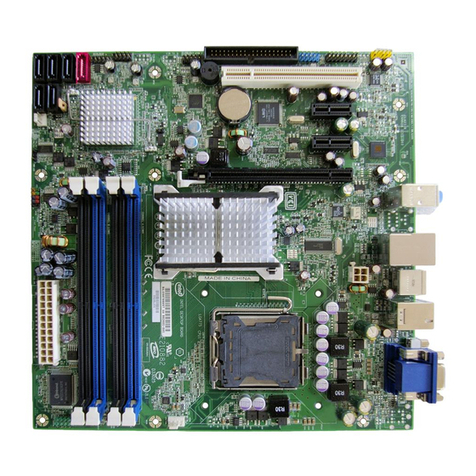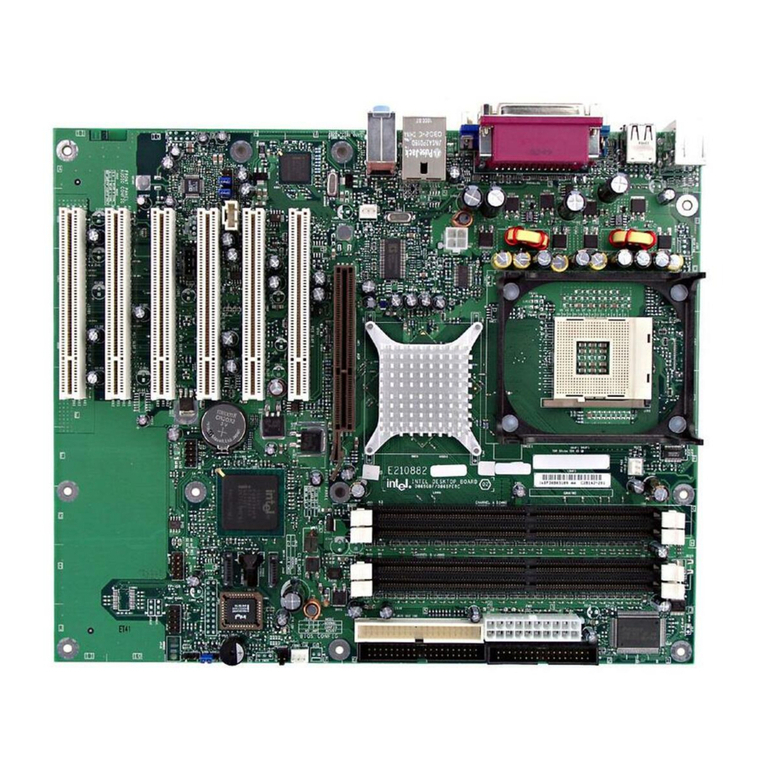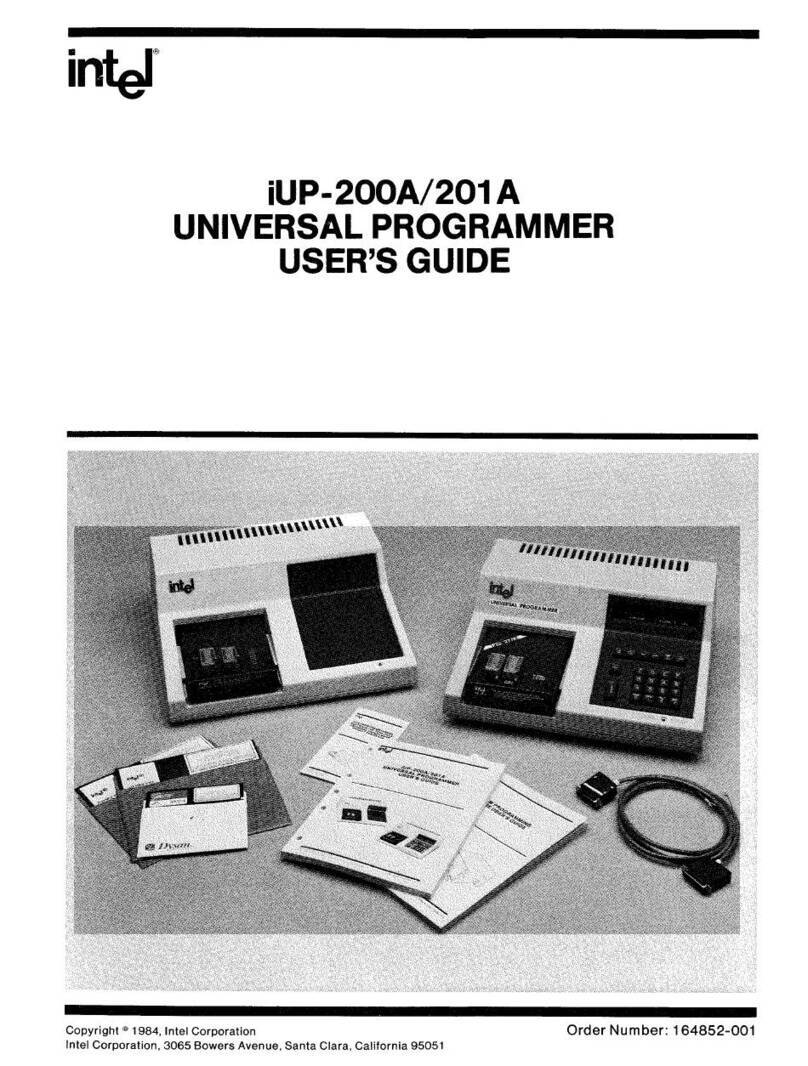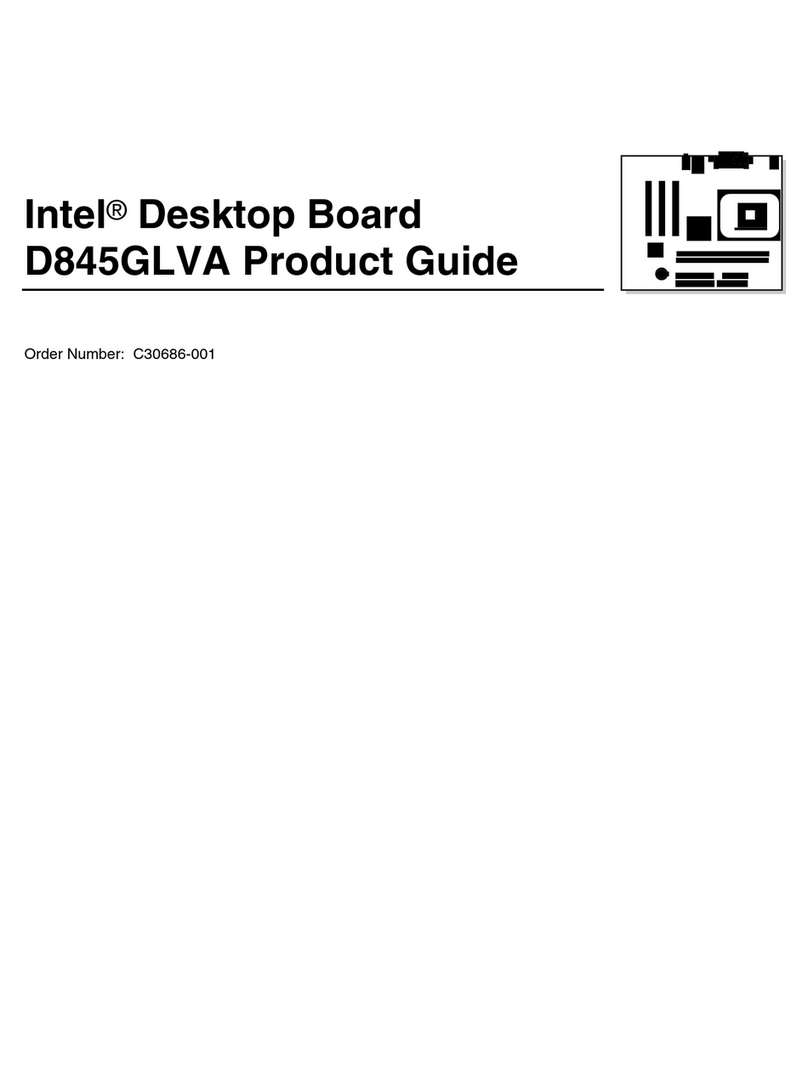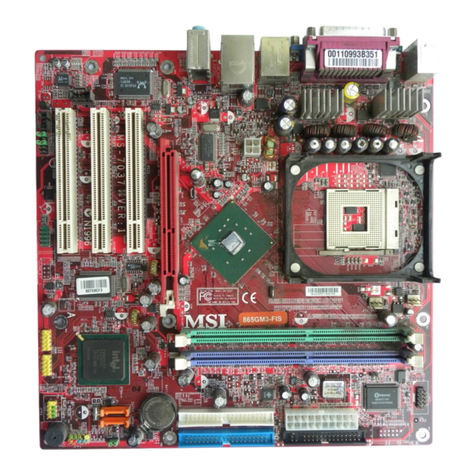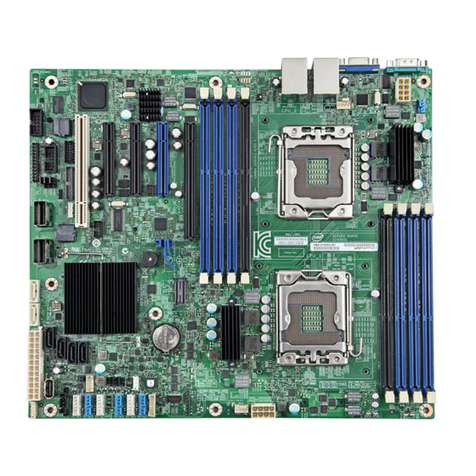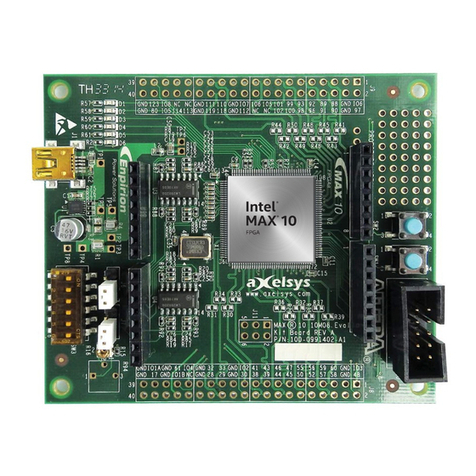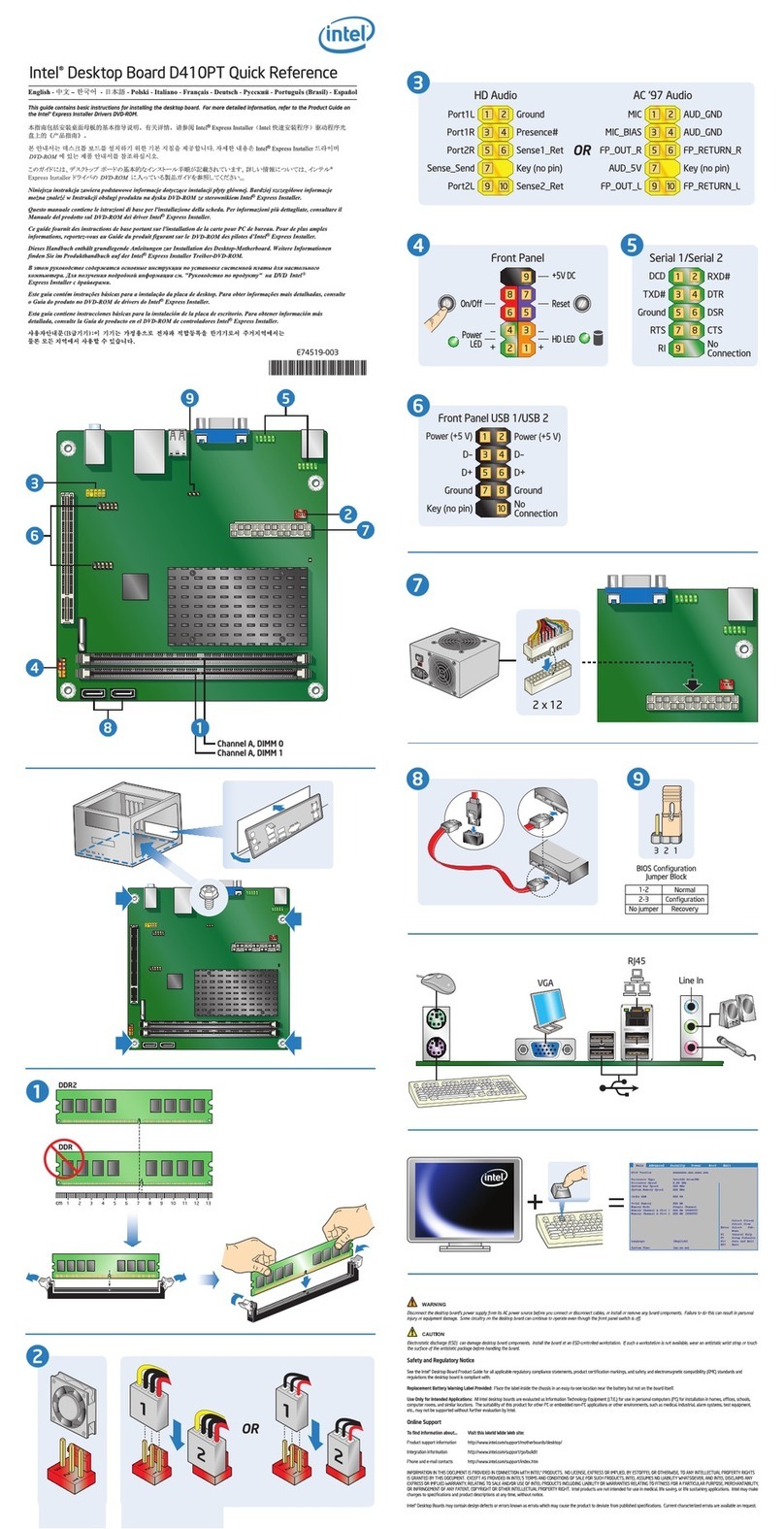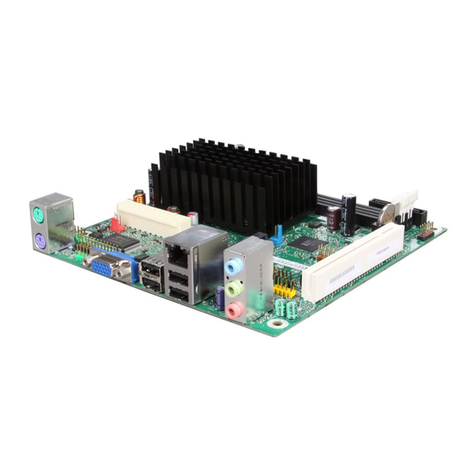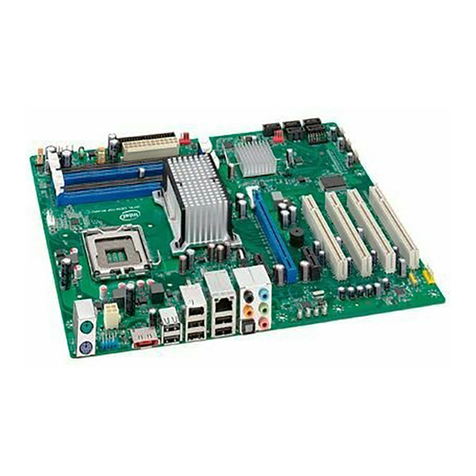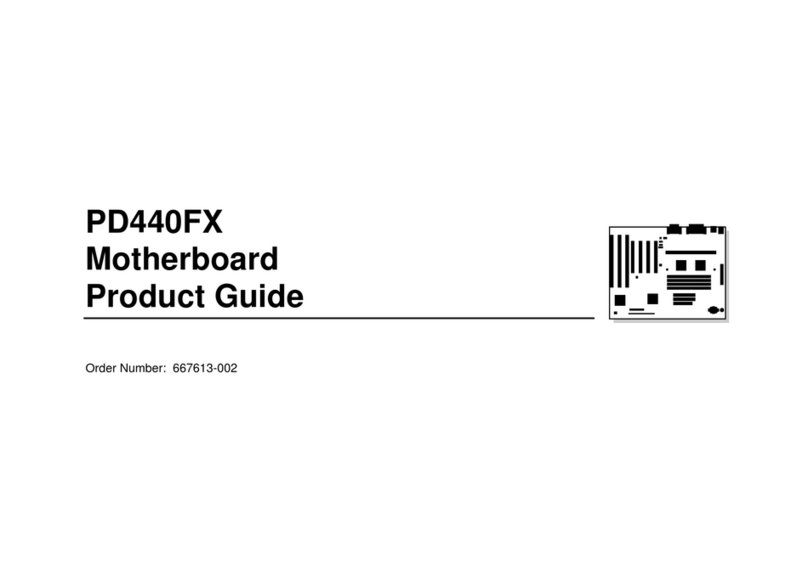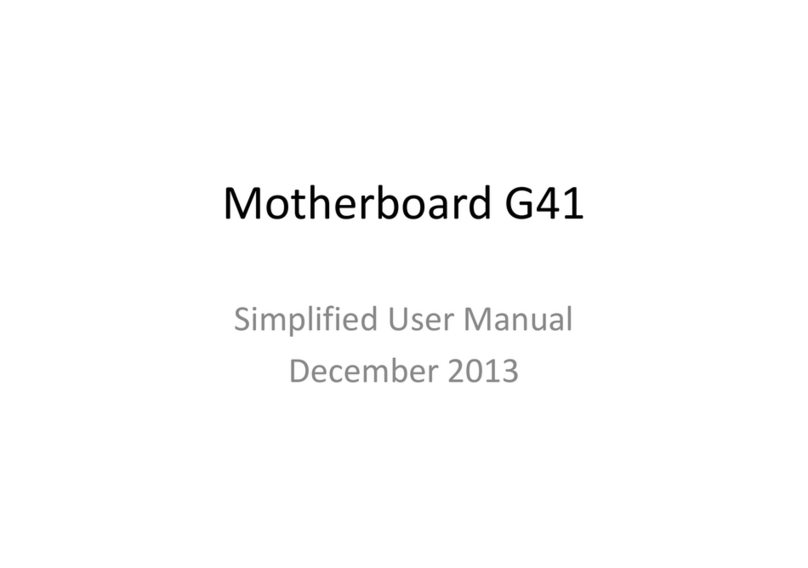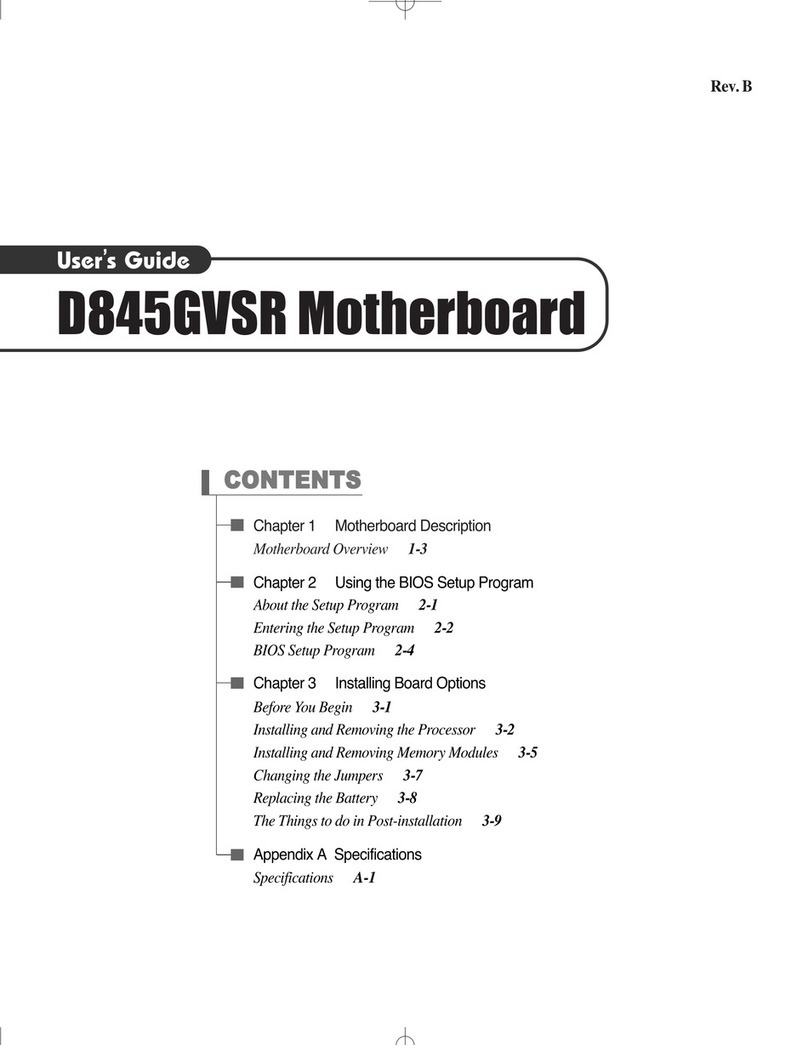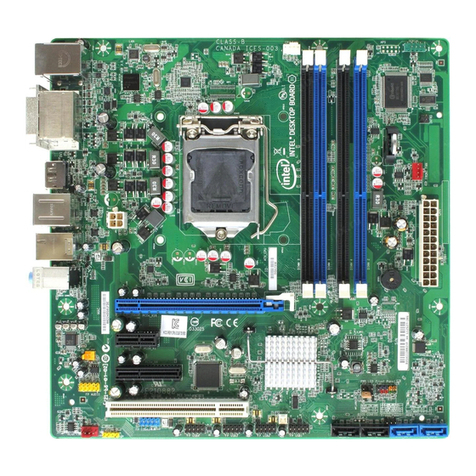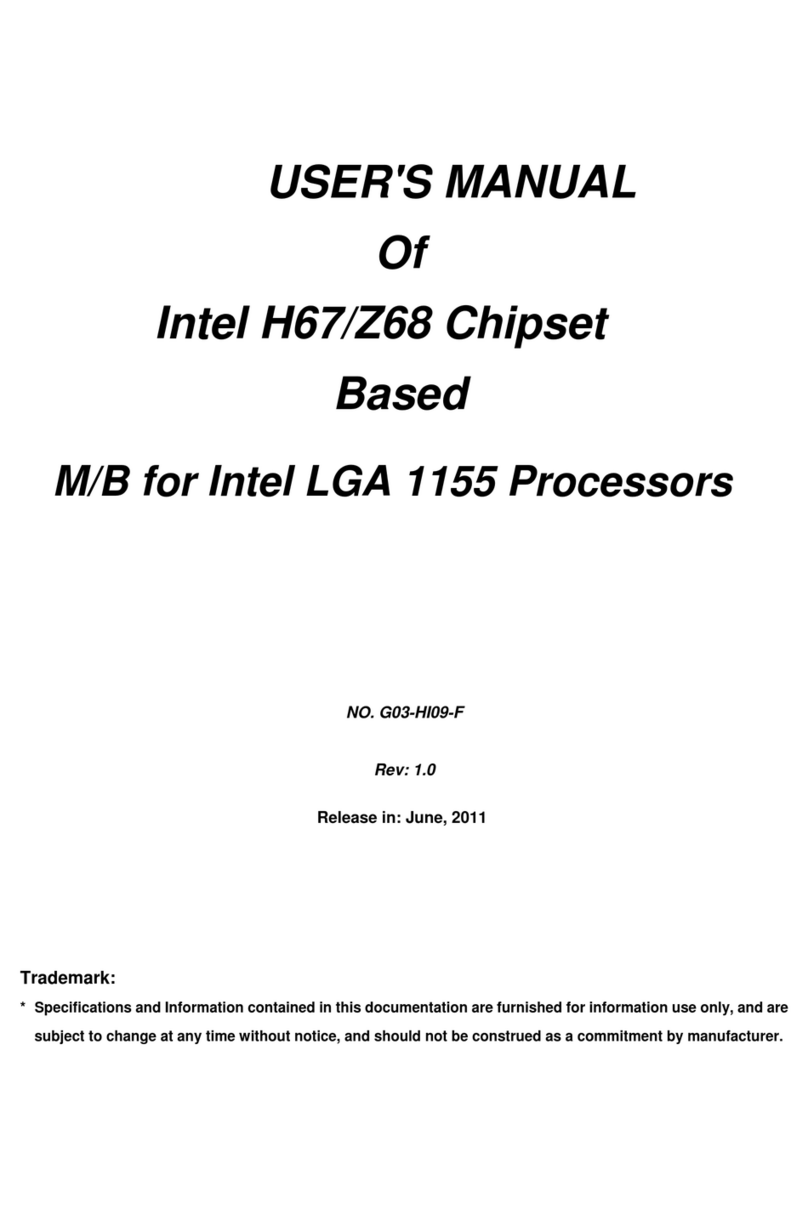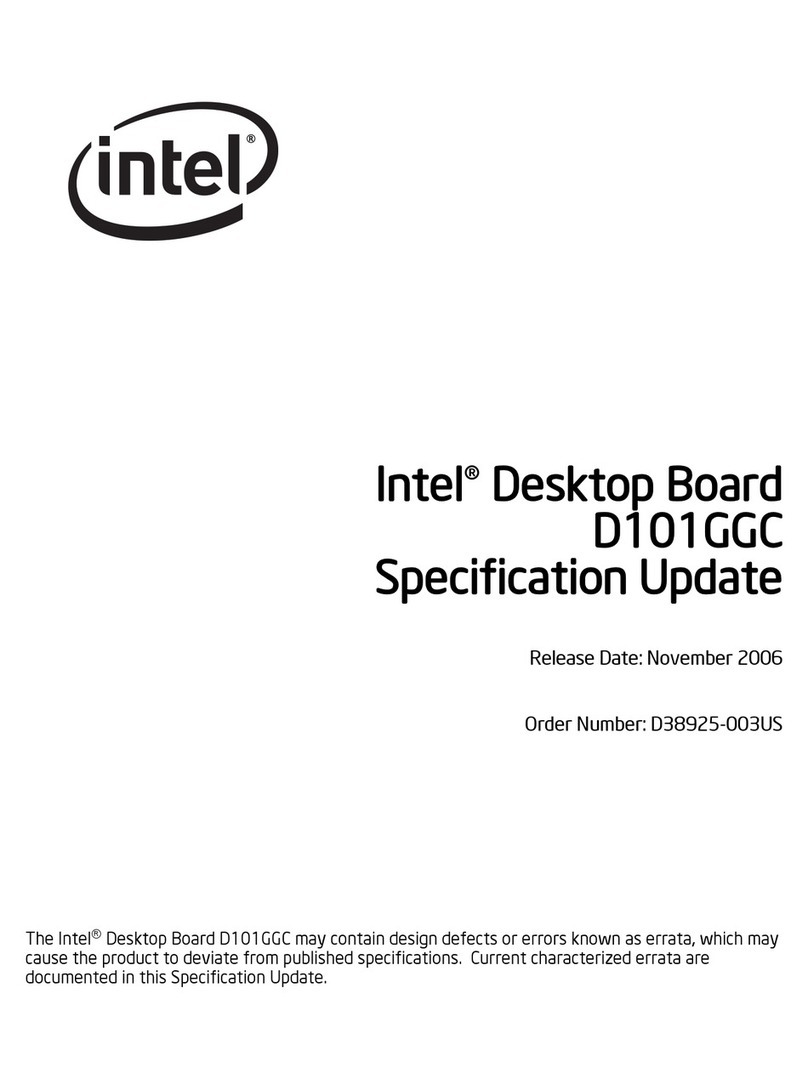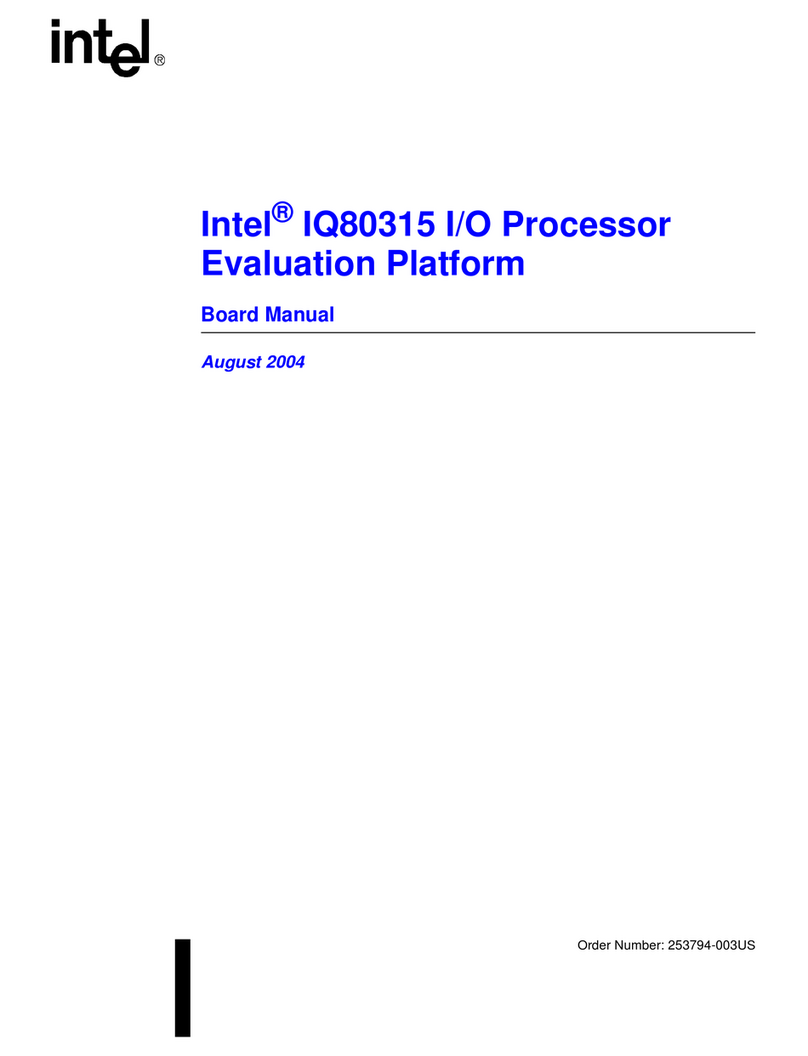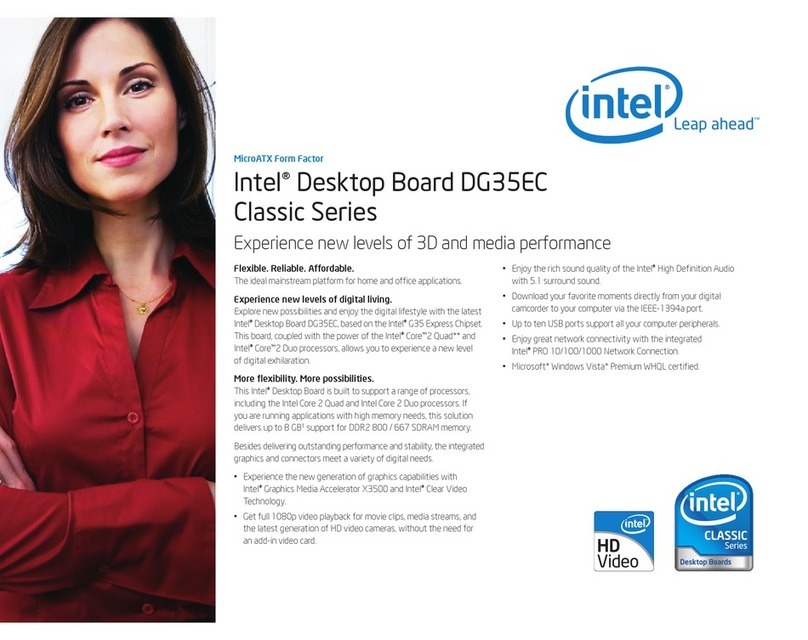
Contents
ix
5Regulatory Compliance and Battery Disposal Information
5.1Regulatory Compliance..................................................................... 75
5.1.1Safety Standards.................................................................. 75
5.1.2European Union Declaration of Conformity Statement
................ 76
5.1.3Product Ecology Statements................................................... 77
5.1.4EMC Regulations .................................................................. 79
5.1.5ENERGY STAR* 5.0, e-Standby, and ErP Compliance ................. 82
5.1.6Regulatory Compliance Marks (Board Level)
............................. 83
5.2Battery Disposal Information............................................................. 84
Figures
1. Major Board Components.................................................................. 13
2. Block Diagram ................................................................................ 15
3. Memory Channel and DIMM Configuration ........................................... 19
4. Back Panel Audio Connector Options .................................................. 25
5. LAN Connector LED Locations............................................................ 27
6. Thermal Sensors and Fan Headers ..................................................... 29
7. Location of the Standby Power LED (Green) ........................................ 37
8. Detailed System Memory Address Map ............................................... 39
9. Back Panel Connectors ..................................................................... 41
10. Component-side Connectors and Headers ........................................... 42
11. Connection Diagram for Front Panel Header ........................................ 48
12. Connection Diagram for Front Panel USB Headers ................................ 50
13. Location of the Jumper Block............................................................. 51
14. Intel MEBX Reset Header.................................................................. 53
15. Board Dimensions ........................................................................... 54
16. Localized High Temperature Zones..................................................... 58
Tables
1. Feature Summary............................................................................ 11
2. Components Shown in Figure 1 ......................................................... 14
3. Supported Memory Configurations ..................................................... 18
4. HDMI Port Status Conditions ............................................................. 20
5. Audio Jack Support.......................................................................... 23
6. LAN Connector LED States ................................................................ 27
7. Effects of Pressing the Power Switch .................................................. 31
8. Power States and Targeted System Power........................................... 32
9. Wake-up Devices and Events ............................................................ 33
10. System Memory Map ....................................................................... 40
11. Component-side Connectors and Headers Shown in Figure 10................ 43
12. TPM Header.................................................................................... 44
13. Serial Port Header ........................................................................... 44
14. S/PDIF Header ................................................................................ 44
15. Internal Mono Speaker Header .......................................................... 44
16. Front Panel Audio Header for Intel HD Audio........................................ 45
